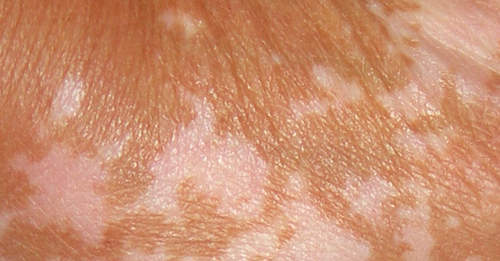There are many causes for this problem that can sometimes leave you feeling self conscious. Some reasons may be as uncomplicated as applying sun block unevenly, while other causes require medical treatment. Some of the main causes of skin discoloration include the following conditions:
Melasma- a skin discoloration that derives from the irregular production of progesterone and estrogen. The condition is most commonly found with pregnant women, as a result of hormone replacement therapy, or birth control pills.
Exposure to sun- as the skin ages, small, dark blotches called liver spots can emerge. The spots are not dangerous, and can usually be treated with a doctor’s care. Also, sun exposure can flare up already-existing issues with discoloration.
Vitiligo- a condition where the cells producing the skin-coloring pigment melanin stop functioning or die. It manifests itself by white patches that spread across the surface of the skin.
Tinea versicolor- a fungal infection that causes dry, flaky, and discolored skin. The condition is aggravated by humid temperatures, a compromised immune system, or hormone level fluctuations.
Skin cancer- melanoma can present itself in many ways. If you notice skin discoloration that changes shape, skin texture, or color, you should talk with your doctor to rule out cancer.



 Contact Us
Contact Us






 Hospitals
Hospitals
 Doctors
Doctors
 Diagnostic
Diagnostic
 Pharmacy
Pharmacy
 Health Tips
Health Tips
 Blog
Blog

























Comments